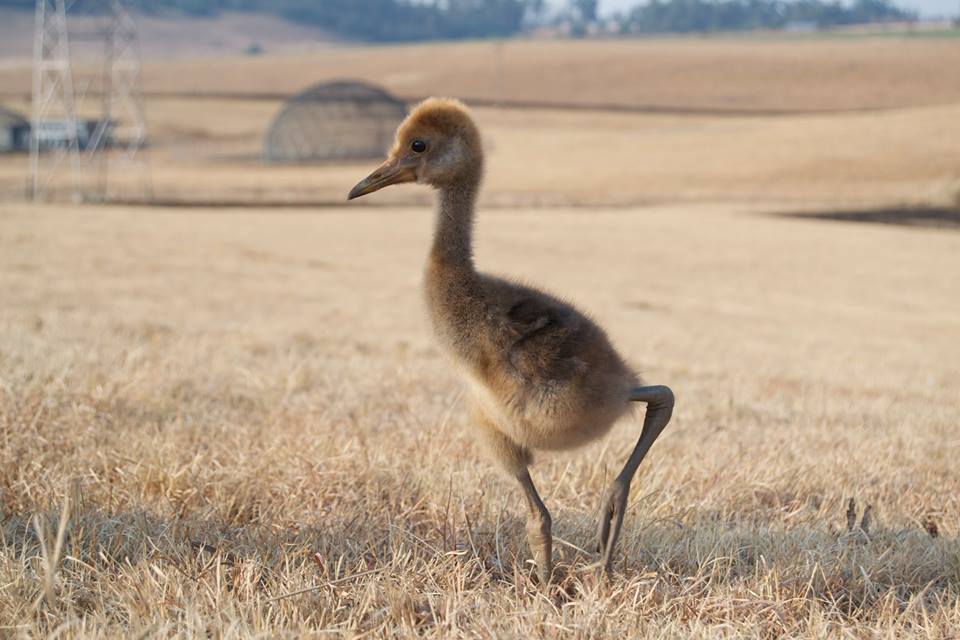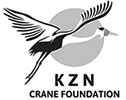Wattled Cranes
Summary
WATTLED CRANES Grus carunculata
Conservation Status: Red Data Book of Birds of South Africa, Lesotho and Swaziland: Vulnerable. Cites Appendix II; CMS II
Identification: Very large 1.20 -1.75 m, 7.5 – 8.4kg (the largest African crane). Sexes alike in plumage. Neck white, back grey, belly black, wattles white. The breast, primaries, secondaries, and tail coverts are black. The secondaries are long and nearly reach the ground. The upper breast and neck are white all the way to the face. The skin in front of the eye extending to the base of the beak and tip of the wattles is red and bare of feathers and covered by small round wart-like bumps. Iris orange, bill reddish brown, legs and feet black. bare facial skin red.
Distribution: Endemic to Eastern and Southern Africa - shallow marsh-like habitats with a good deal of sedge-based vegetation.
Population: 6,000 - 6,300 mature individuals
Main threats: Habitat loss and degradation of habitat and food sources.
Conservation: Landowner engagement in conservation, responsible use of agri-chemicals, co-operation with power generation and distribution authorities.
Identification
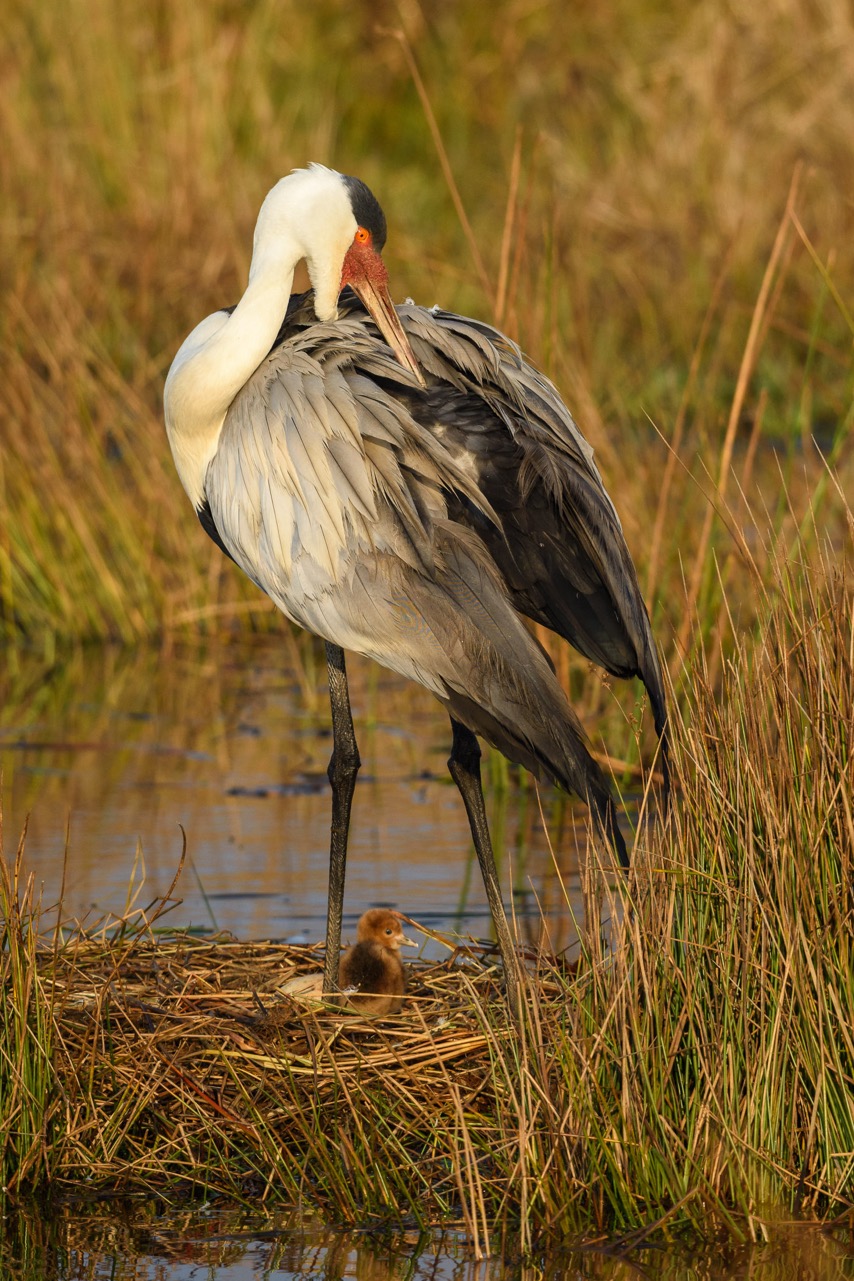
- Very large 1.20 -1.75 m, 7.5 – 8.4 kg (the largest African crane). Sexes alike in plumage.
- Neck white, back grey, belly black, wattles white. The breast, primaries, secondaries, and tail coverts are black. The secondaries are long and nearly reach the ground.
- The upper breast and neck are white all the way to the face.
- The skin in front of the eye extending to the base of the beak and tip of the wattles is red and bare of feathers and covered by small round wart-like bumps.
- Iris orange,
- Bill reddish brown,
- Legs and feet black.
- Bare facial skin red.
Voice: Distinctive guttural rattling croak kraaaak, fairly high pitched and very loud.
Conservation
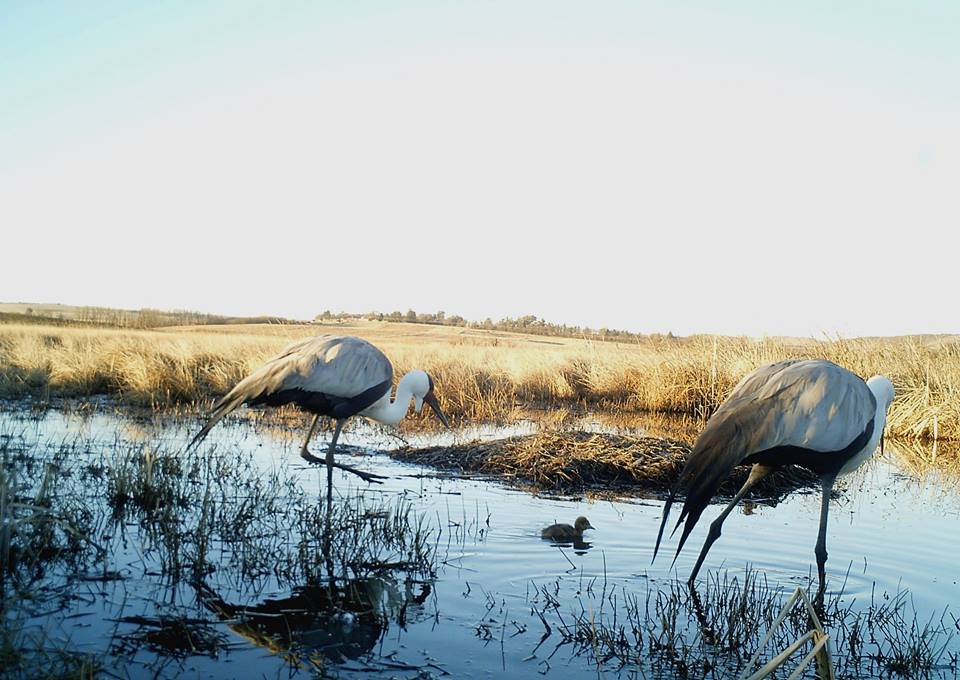
This species is reliant on the maintenance of undisturbed, pristine to semi-pristine high altitude wetland and grassland areas within privately-owned farmland. The key to the conservation of Wattled Cranes is to establish mechanisms to encourage private landowners to conserve these birds on their properties. Legislation protecting Wattled Crane habitat needs to be improved locally, while this species is currently included in CITES Appendix 2.
To view a summary of the 2000 Population and Habitat Viability Assessment for the Wattled Crane (Bugeranus carunculatus) in South Africa, click the button below
PROTECTED AREAS AND IBA’s
The two most important protected sites are Umgeni Vlei (14-16 mature individuals) and Ntsikeni Vlei (8-10 mature individuals) followed by Mvoti Vlei, Karkloof, Kamberg and Highmoor. A few pairs of Wattled Cranes are found in the grasslands of northern Eastern Cape around Ugie and Maclear (6-10 mature individuals) and the Highveld grasslands of Mpumalanga and eastern Free State (10-20 mature individuals) (McCann 2003).
Distribution
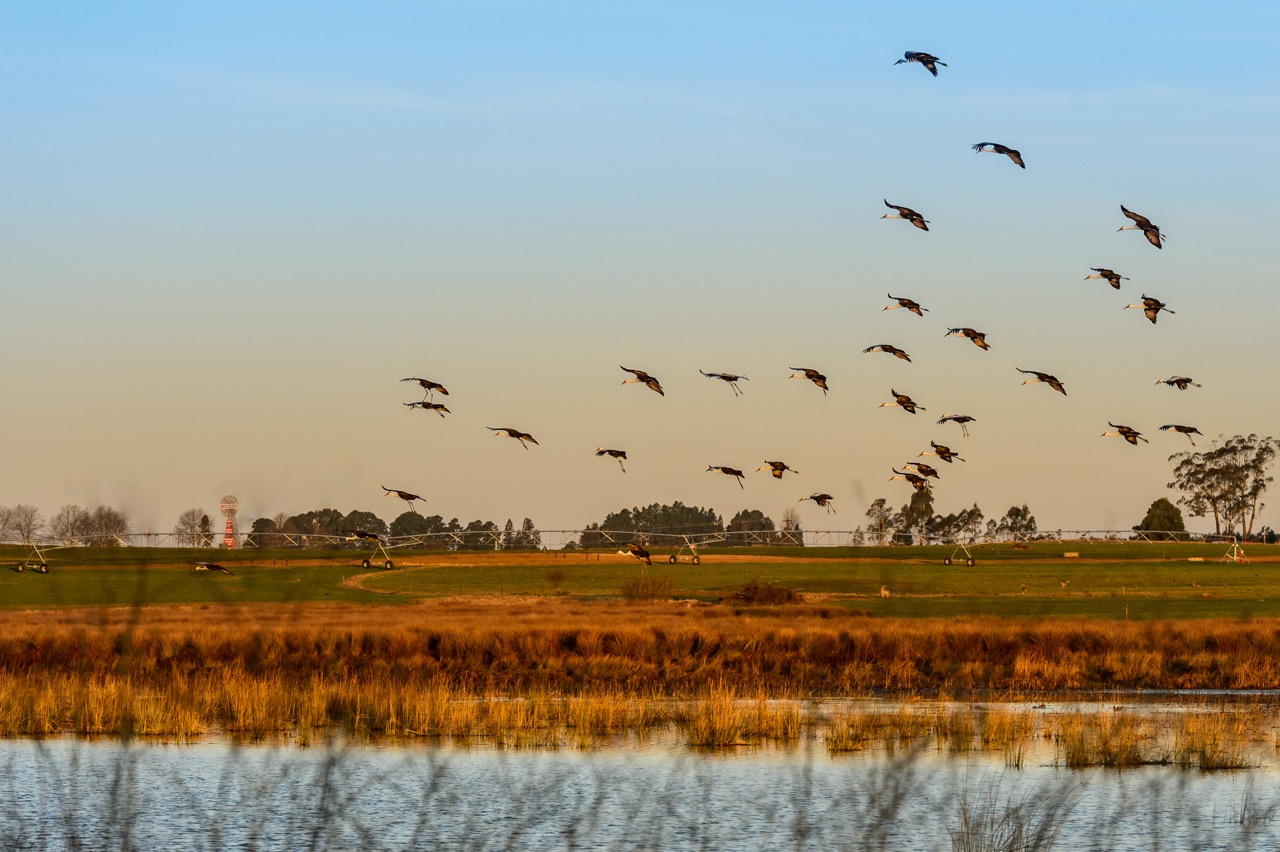
Historically, Wattled Cranes were widespread in South Africa from northern Limpopo, through Mpumalanga and Swaziland to western KZN and the Eastern Cape, extending as far south the Western Cape (Somerset West/Caledon). Today it occurs in a much more restricted range within the eastern higher rainfall regions of the country, with concentrations in the Mpumalanga highlands and the midlands to southern parts of KwaZulu-Natal. Small numbers of breeding pairs are also present within the Wakkerstroom region, the Eastern Cape as well as the north-eastern Free State. Wattled Cranes no longer occur within the Western Cape and Swaziland.
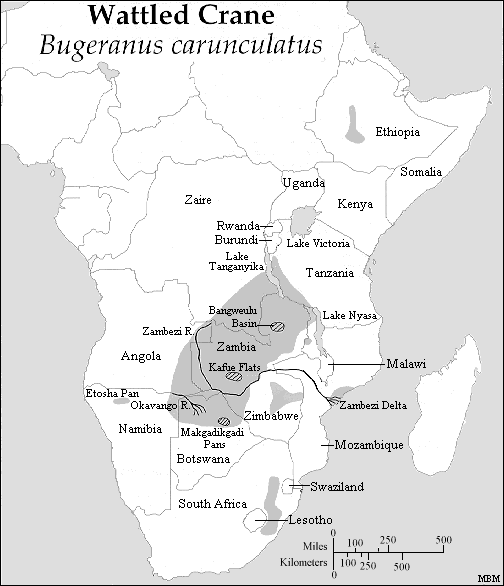
The largest population of Wattled Cranes occurs in south-central Africa (Zambia, Botswana, Namibia, Angola, Zaire, Tanzania and Zimbabwe). A small population occurs in Ethiopia.

Ecology & Habits
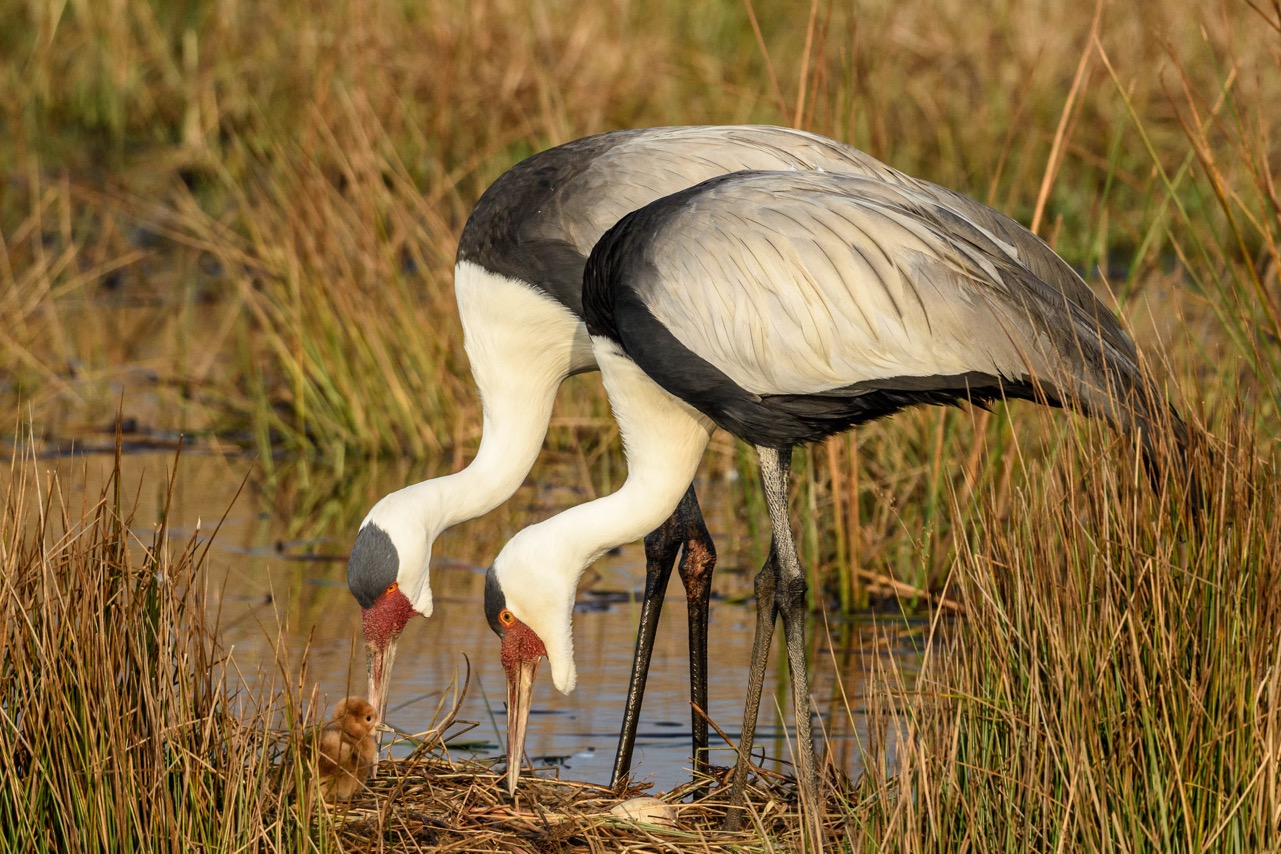
The Wattled Crane is the largest and rarest of the six crane species that occur in Africa. They are a winter-breeding, wetland-dependent species. Peak breeding activity occurs between May and August, although breeding activity has been recorded in all months of the year.
Active breeding pairs are year round residents of highland wetlands, sometimes using seasonal wetlands opportunistically or as post breeding dispersal areas. Pairs are strongly territorial and may defend territories several square kilometres in extent. The territories are highly specialized, comprising permanently inundated wetlands with predominantly sedge based vegetation. Prolonged disturbance at nests often results in failed clutches. The extended breeding period allows pairs whose first attempt at breeding was unsuccessful to re-nest (occasionally multiple times) within the same season.
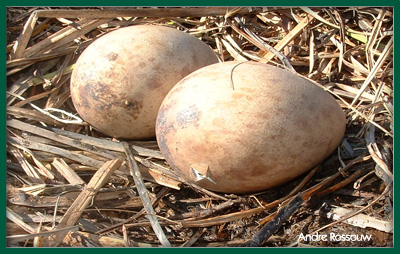
The Wattled Crane’s reproductive rate is low, with the average clutch size being the lowest of any of the cranes. Pairs may lay either 1 or 2 eggs in a clutch, with the majority of the 2-egg clutches occurring in the KwaZulu-Natal population. The incubation period of Wattled Cranes is the longest of any crane, c. 36 – 40 days. Pairs have an 82 % hatching success rate, with the second egg acting as an “insurance policy” against the first not hatching. Regardless of clutch size, only one chick is ever raised, with the second egg being abandoned once the first has hatched.
The mean breeding success or mean number of chicks fledged per pair per annum is c. 0.67, with a 62.2% fledging success rate. Fledging takes 110 to 130 days. Juveniles remain with their parents for an extended period (+12 months), after which they are expelled from the breeding territory or are taken to a non-breeding floater flock (essentially occurs only in KwaZulu-Natal). Juveniles obtain full adult plumage after the first year, but may only reach reproductive maturity at 8 or 9 years.
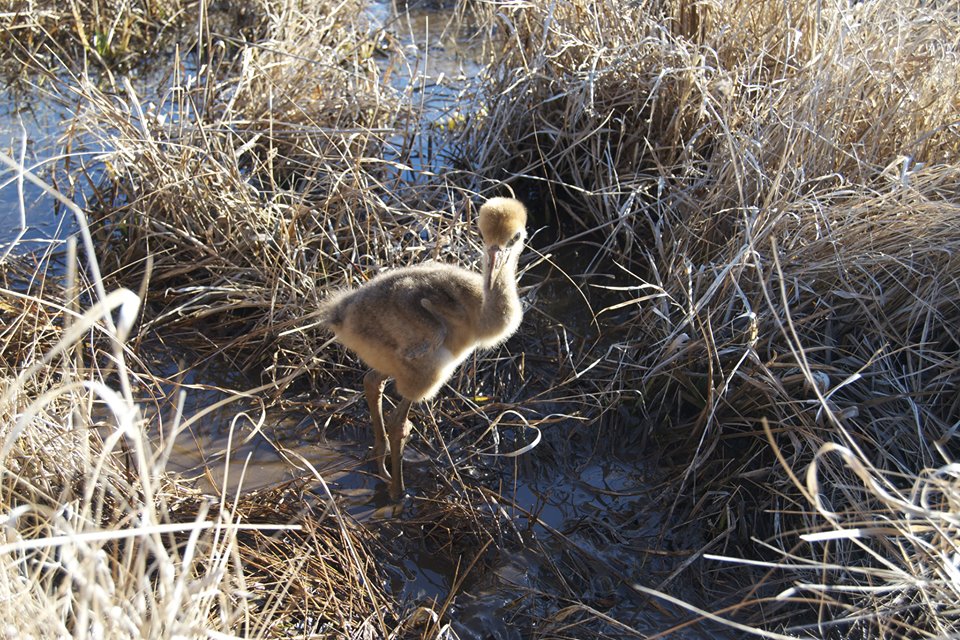
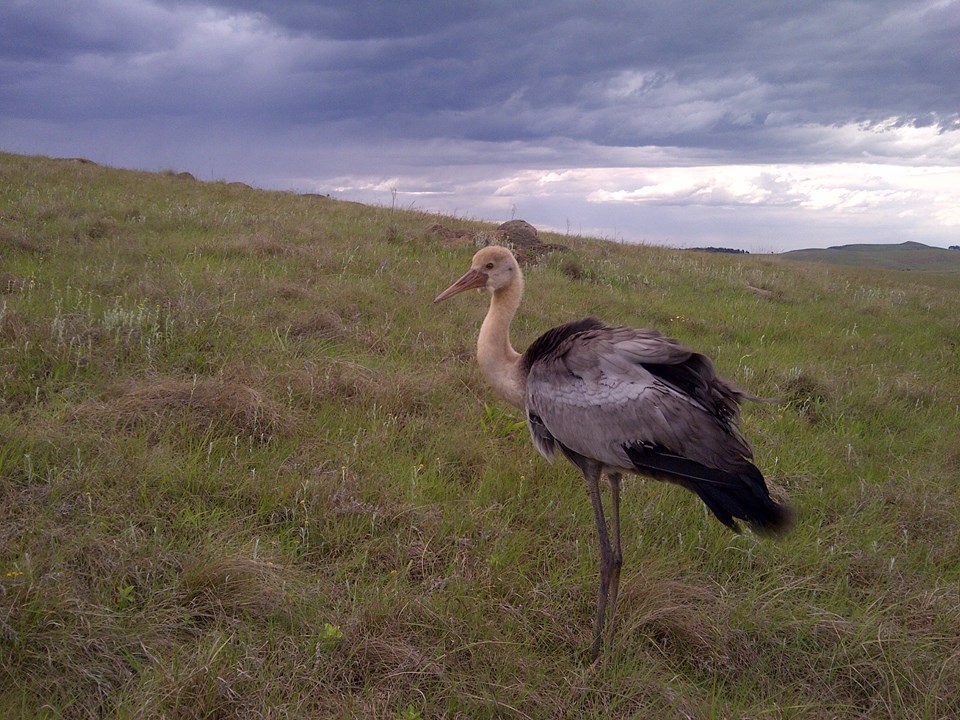
Population

In the period between the 1970’s and 2000 the South African Wattled Crane population experienced a catastrophic decline to under 200 birds. Since then there has been a steady increase to 311 birds (2014 Crane survey).
The population recovery is largely due to increased focus on the issue by conservation groups (EWT, KZN Crane Foundation, and Ezemvelo) and the increased awareness of the problem by farmers, who have joined in conservation efforts.

Threats
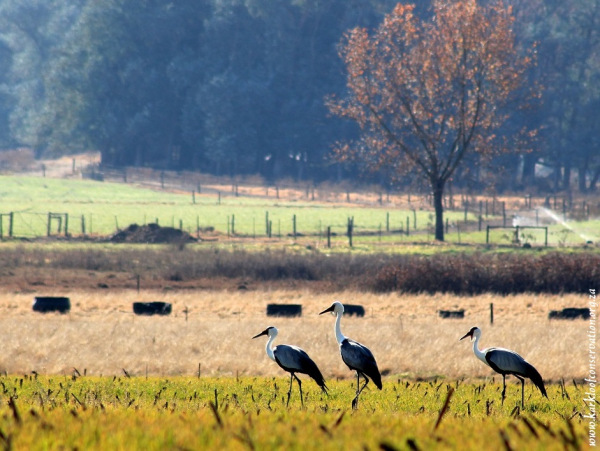
Loss and degradation of wetland and grassland breeding and foraging habitats constitute the most significant threat to this species, mainly through the loss of wetlands to intensified agriculture, dam construction, forestation and industrialization. Grassland areas surrounding wetlands, suitable for breeding, are as important to successful breeding as the wetland itself. When these areas are disturbed, through the planting of exotic timber, they are often rendered incompatible with Wattled Crane nesting requirements. In addition, many hundreds of hectares of grassland habitats are converted annually to intensive agriculture for food production, in many cases this conversion involves the draining of wetlands and the loss of crane nesting and foraging sites.
Incompatible management of wetland habitats also constitutes a threat. During the winter months, the peak period for Wattled Crane breeding activity, the burning of wetlands, as fire-breaks, on farmland and forestry property , leads to the loss of eggs or young unfledged chicks.
Wattled Cranes, especially first-year inexperienced flying birds, are prone to colliding with power lines, especially 11 and 22 kV rural power lines, often located within territories between roosting and feeding sites.
Wattled Crane chicks and eggs are occasionally removed from the wild for the international bird trade, which could have a significant impact on South Africa’s small breeding population. Measures are being taken to control the illegal trade in cranes both domestically and internationally.
